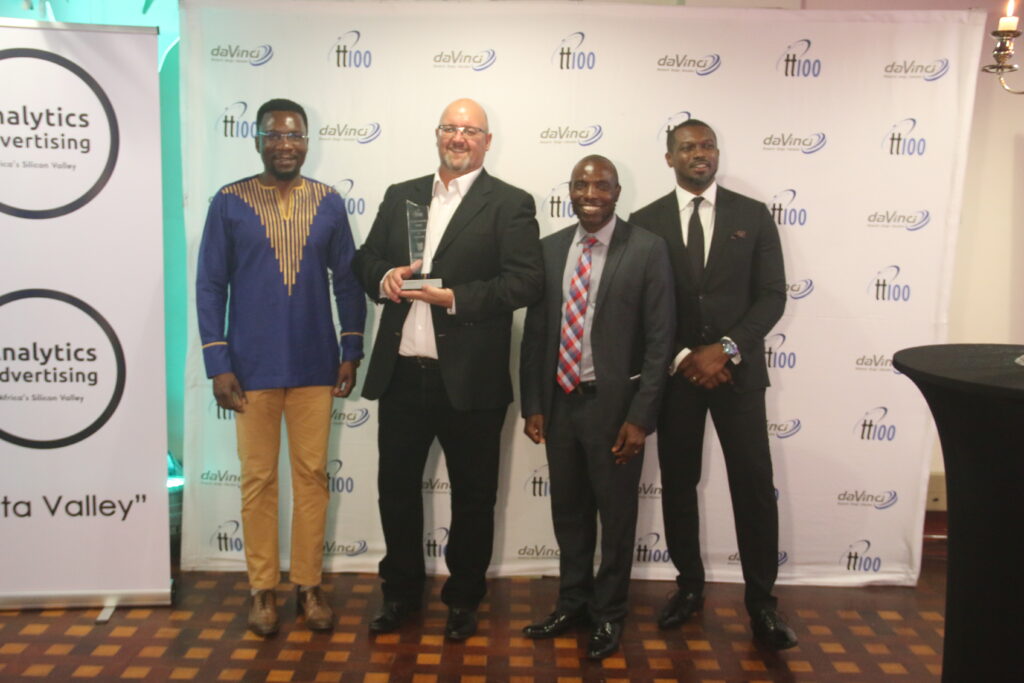
FAR-UVC Africa, winner of the tt100 Management of Technology Award for 2021, category for emerging enterprises
What it really means to have skin in the game
Having “skin in the game” is a well-known investment term used to describe a company’s commitment to its own business, products, and services. Conrad Kullman, chief executive of FAR-UVC Africa, has given that term an interesting new twist.
From the moment he heard about the bacterial, viral, and mould-destroying properties of FAR UVC light technology, Conrad knew this technology was special. It can not only be deployed in a Covid-19-type scenario but against any germ-related threat, including that posed by anti-microbial resistant “superbugs”, which the World Health Organisation predicts will cause 10 million deaths a year by 2050.
Unlike the chemicals currently used to kill bacteria, viruses, and mould on surfaces or in the air in occupied indoor spaces, FAR UVC uses light to kill them mechanically – and it does so far quicker and more potently than chemicals, says Conrad.
“A lot of people have jumped on the bandwagon with air sanitisers which, depending on the size of the room, can handle an average of nine air changes per hour,” says Conrad. “For FAR UVC, the equivalent is 3 000 air changes per hour. The technology cleans the air and surfaces in real-time, and it does so continuously.”
These facts, he says, have been substantiated through research by Professor Catherine Noakes, an expert in the indoor air quality at Leeds University in the United Kingdom.
Other compelling attributes of FAR UVC technology are its safety certification by the United States’ Environmental Protection Agency and the fact that all devices (typically lamps) have built-in sensors that pick up movement, activating the technology only when the room is occupied and switching it off 15 minutes after the last person leaves.

“Our biggest challenge is education; some people think it’s dangerous,” says Conrad. This is despite extensive safety testing, which has shown that FAR UVC cannot penetrate human skin and is not harmful even after intensive and prolonged exposure. The ACGIH (The American Conference of Governmental Industrial Hygienists) has also recently increased the exposure limit to FAR UVC 222nm light by 21 times, adding further weight to its safety when being used in occupied spaces.
This is where the “skin in the game” part comes in.
Conrad’s own skin in the game
As a practical demonstration of how safe the technology is, Conrad went to his doctor and had a 7cm patch of skin on his arm removed.
He then sat under a 150 watt FAR UVC lamp for 13 hours, with his arm only 7cm away from the lamp. “I was exposed to 210 000 millijoules, which is 438 times the ‘safe’ limit,” he says.
Conrad then went back to his doctor to have a piece of the exposed skin cut out.
Both patches of skin were then sent to a laboratory for testing. “The only difference was that the second piece of skin had a slight suntan,” he says.
That skin in the game, plus the scientific evidence, is seeing the technology gain traction in the marketplace.
Conrad says it is being rolled out at five pilot sites for a private hospital group in South Africa and has been installed for customers in over 30 countries, from Australia and the Caribbean to India, Mauritius and the United Kingdom.
Superbugs of the world, your days may be numbered.
